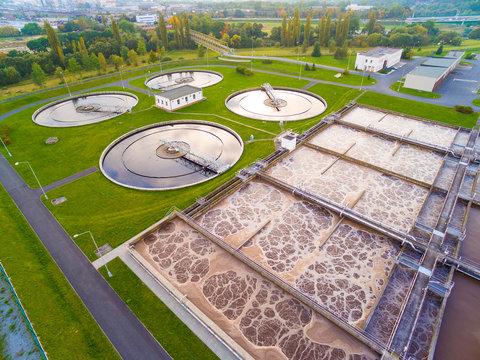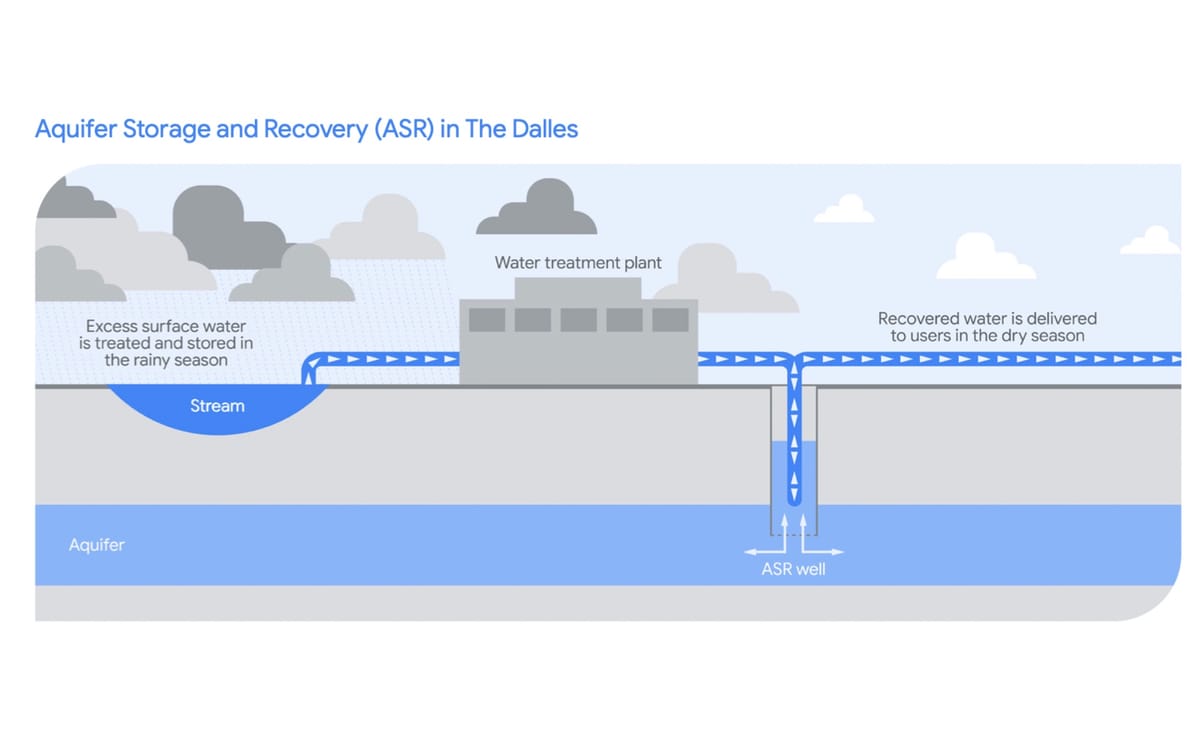Report on the Department of Water Management (DWM) 2026 Proposed Budget
Executive Summary: A Strategic Alignment with Sustainable Development Goals
The Department of Water Management’s (DWM) proposed 2026 budget represents a monumental investment in sustainable urban infrastructure, with appropriations increasing by 85.5% to $774,039,573. This historic increase is primarily driven by new grant funding specifically allocated for critical water and sanitation projects. These initiatives directly support the achievement of several United Nations Sustainable Development Goals (SDGs), particularly SDG 6 (Clean Water and Sanitation), SDG 9 (Industry, Innovation, and Infrastructure), and SDG 11 (Sustainable Cities and Communities). The budget prioritizes the construction and modernization of water systems, reflecting a strategic focus on public health, environmental protection, and climate resilience.
Analysis of SDG-Focused Investments
SDG 6: Clean Water and Sanitation
The budget allocates significant resources to ensure the availability and sustainable management of water and sanitation for all. Key projects directly address specific targets within SDG 6:
- Target 6.1 (Safe and Affordable Drinking Water): An appropriation of $13.4 million from the new Entitlement Fund is earmarked for lead service line replacement, a critical initiative to eliminate contaminants and ensure safe drinking water for residents.
- Target 6.3 (Improve Water Quality): A substantial portion of the $318.1 million from the new Disaster Recovery Fund is dedicated to local sewer line construction and cleaning. This investment is vital for reducing water pollution and improving the quality of local water bodies.
- Target 6.b (Support Local Communities): The extensive funding for stormwater infrastructure construction empowers the community by mitigating flood risks and enhancing local water management systems.
SDG 9: Industry, Innovation, and Infrastructure
The budget strongly supports the development of quality, reliable, sustainable, and resilient infrastructure. The primary focus on capital projects aligns directly with Target 9.1.
- The largest single appropriation is $290.2 million for the construction of buildings and structures, an increase of nearly 6000% from the previous year. This funding will build and upgrade essential water and sewer infrastructure, enhancing its resilience and long-term sustainability.
- An additional $34.7 million from the Disaster Recovery fund is allocated for professional and technical services, leveraging external expertise to implement these large-scale infrastructure projects efficiently.
SDG 11: Sustainable Cities and Communities
The DWM budget is a cornerstone of the city’s strategy to create inclusive, safe, resilient, and sustainable urban environments, directly addressing Target 11.5 by aiming to reduce the impact of water-related disasters.
- The creation and utilization of a $318.1 million Disaster Recovery Fund for stormwater and sewer infrastructure is a proactive measure to enhance the city’s resilience against flooding and other climate-related water events.
Detailed Financial and Operational Report
Appropriations and Funding Sources
The proposed budget marks a dramatic shift in DWM’s funding profile, moving from a primarily locally-funded department to one significantly supported by external grants for sustainable development projects.
- Total Proposed Appropriation (2026): $774,039,573
- Net Increase from 2025: $356,854,290 (+85.5%)
- Shift in Funding Mix: Grant funding constitutes 43.4% of the 2026 proposal, a substantial increase from only 4% in the 2025 budget.
Major new funding sources dedicated to infrastructure renewal include:
- Disaster Recovery Fund: $318,175,000
- Entitlement Fund: $13,392,000
Human Resources and Capacity
While financial resources have dramatically increased to meet SDG targets, the departmental headcount remains constant, indicating a strategy focused on project execution through capital investment and external contracting rather than internal expansion.
- Total Budgeted Positions: 2,492 (no net change from 2025).
- Key Position Adjustments:
- Elimination of eight construction laborer positions and three motor truck driver positions.
- Addition of ten stores laborer positions and three district clerk positions.
- Vacancy Rate: The department averaged a 13% vacancy rate for full-time positions from February to September 2025, a factor to consider in managing the oversight of expanded contract work.
Historical Context and Performance
Budgetary and Staffing Trends
The proposed 85.5% budget increase is an unprecedented event in the department’s recent history, far exceeding the average annual growth rate of 4.6% observed from 2011-2025. This highlights a significant policy shift towards accelerated investment in water infrastructure. Staffing levels have remained stable over the same period, with an average annual increase of 1%.
Fiscal Performance
The DWM has a demonstrated history of effectively utilizing its allocated resources. Over the last three complete budget years, the department spent an average of 94.9% of its locally funded budget, significantly higher than the citywide average of 86.4%. This track record suggests a high capacity for implementing the expanded capital programs outlined in the 2026 budget proposal.
Analysis of Sustainable Development Goals (SDGs) in the Article
1. Which SDGs are addressed or connected to the issues highlighted in the article?
-
SDG 6: Clean Water and Sanitation
The article directly addresses this goal through its focus on the Department of Water Management’s (DWM) budget for essential water and sanitation infrastructure. The text explicitly mentions funding for “local sewer line construction and cleaning,” “stormwater infrastructure construction,” and “lead service line replacement,” all of which are fundamental to ensuring clean water and managing sanitation effectively.
-
SDG 9: Industry, Innovation, and Infrastructure
This goal is relevant as the article details a massive financial investment in developing and upgrading infrastructure. The “dramatic change” in the budget, with a nearly 6000% increase in appropriations for “construction of buildings and structures,” highlights a significant effort to build resilient and sustainable infrastructure related to water management.
-
SDG 11: Sustainable Cities and Communities
The article connects to this goal by discussing investments that make a city more resilient and provide basic services to its inhabitants. The use of a “Disaster Recovery Fund” for “stormwater infrastructure construction” is a direct measure to mitigate the effects of water-related disasters like flooding. Furthermore, funding for “lead service line replacement” and “local sewer line construction” contributes to providing safe and adequate basic services for the community.
2. What specific targets under those SDGs can be identified based on the article’s content?
-
SDG 6: Clean Water and Sanitation
- Target 6.1: By 2030, achieve universal and equitable access to safe and affordable drinking water for all. The article identifies this target through the specific earmarking of funds from the “Entitlement fund” for “lead service line replacement,” which is a critical action to improve the safety of drinking water.
- Target 6.3: By 2030, improve water quality by reducing pollution… through… treating wastewater. The allocation of funds for “local sewer line construction and cleaning” directly supports this target by ensuring wastewater is properly managed and treated, thereby improving overall water quality.
-
SDG 9: Industry, Innovation, and Infrastructure
- Target 9.1: Develop quality, reliable, sustainable and resilient infrastructure… to support economic development and human well-being. The article highlights this target with its focus on the massive budget increase for infrastructure projects. The appropriation of “$290.2 million for construction of buildings and structures,” including sewer and stormwater systems, is a clear investment in developing reliable and resilient infrastructure.
-
SDG 11: Sustainable Cities and Communities
- Target 11.1: By 2030, ensure access for all to adequate, safe and affordable housing and basic services. The funding for “lead service line replacement” and “local sewer line construction” directly contributes to the provision of essential basic services (safe water and sanitation) to the city’s population.
- Target 11.5: By 2030, significantly reduce… direct economic losses… caused by disasters, including water-related disasters. This target is addressed through the creation and use of the “Disaster Recovery Fund.” The article specifies that a significant portion of this fund ($318.1 million) is appropriated for projects like “stormwater infrastructure construction,” which is a key strategy for reducing the impact of water-related disasters such as floods.
3. Are there any indicators mentioned or implied in the article that can be used to measure progress towards the identified targets?
Yes, the article provides several financial indicators that can be used to measure the commitment and progress towards the identified targets. While it focuses on budgetary inputs rather than outcomes, these figures are direct measures of investment.
-
Financial Investment as an Indicator:
The primary indicators are the specific financial appropriations for relevant projects. These can be seen as a proxy for progress on implementing the targets.
- Indicator for Targets 6.1, 6.3, 9.1, 11.1: The total amount of money allocated to water and sanitation infrastructure. The article provides precise figures, such as the “$290.2 million for construction of buildings and structures” and the specific amounts from different funds earmarked for these purposes.
- Indicator for Target 11.5: The amount of financial resources allocated to disaster risk reduction. The article states that “$318.1 million in appropriations from the Disaster Recovery Fund” is designated for activities including “stormwater infrastructure construction.”
-
Specific Project Funding as an Indicator:
The breakdown of funding for specific types of projects serves as a more detailed indicator.
- Indicator for Target 6.1: The article mentions that the “entitlement fund appropriation is earmarked for lead service line replacement,” with “$6.8 million from the Entitlement fund” allocated for construction.
- Indicator for Targets 6.3 and 9.1: The article specifies that the “Disaster Recovery fund include local sewer line construction and cleaning and stormwater infrastructure construction,” with “$283.4 million from the Disaster Recovery fund” earmarked for construction.
4. Table of SDGs, Targets, and Indicators
| SDGs | Targets | Indicators Identified in the Article |
|---|---|---|
| SDG 6: Clean Water and Sanitation |
6.1: Achieve universal and equitable access to safe and affordable drinking water.
6.3: Improve water quality by reducing pollution and treating wastewater. |
– Appropriation from the Entitlement fund earmarked for “lead service line replacement.” – Allocation of $6.8 million from the Entitlement fund for construction. – Funding from the Disaster Recovery fund for “local sewer line construction and cleaning.” |
| SDG 9: Industry, Innovation, and Infrastructure | 9.1: Develop quality, reliable, sustainable and resilient infrastructure. |
– Total appropriation of $290.2 million for “construction of buildings and structures.” – A 6000% increase in the construction appropriation from the previous year. – Allocation of $283.4 million from the Disaster Recovery fund for construction. |
| SDG 11: Sustainable Cities and Communities |
11.1: Ensure access for all to adequate, safe and affordable basic services.
11.5: Significantly reduce economic losses from disasters, including water-related disasters. |
– Funding allocated for “lead service line replacement” and “local sewer line construction” as basic services. – Creation of a “Disaster Recovery Fund” with $318.1 million in appropriations. – Earmarking of funds for “stormwater infrastructure construction” to mitigate disaster risk. |
Source: bettergov.org







